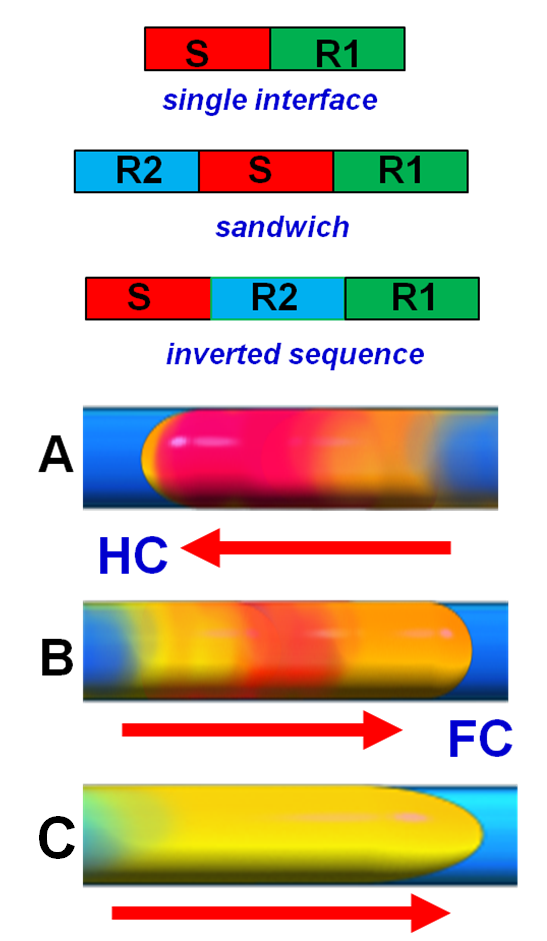The sequence of sample and reagent zones can be assembled in three ways:
- as a single interface
- as a sandwich
- as inverted sequence
It is important to realize that the mechanism of dispersion and ensuing product formation is similar for all three configurations, because the reaction product (yellow) is formed at the interface between the sample and reagent zones. Therefore it is essential to maximize zone overlap by increasing the amplitude of the forward and reversed flow.
As the sample zone (A) is pushed into the holding coil (HC), axial dispersion is promoted, since the center of the stream travels at twice the mean flow velocity and the same happens as the flow is reversed. The resulting parabolic profile telescopes the trailing zone toward the leading edge of the forward zone, while the inner core of the leading zone is filled by the protruding edge of the second zone. The radial mixing and zone overlap is promoted by increasing the amplitude of the flow into the holding coil (2.2.6.C.)
Sequencing & Zone Overlap
2.2.15.

As this happens, the radial dispersion promotes mixing of adjacent parallel layers of sample (red) and reagent (blue). Upon flow reversal (B), the flow velocity profile is suddenly inverted. First radial mixing is promoted by local turbulence, while the axial dispersion is partially reduced, as the stacked zones travel downstream toward the flow cell (C). It is the amplitude of the reversed and forward flow that controls the mutual penetration of sample and reagent zones
For single reagent methods, such as nitrite assay by Gries reagent (2.2.17.) single interface sequence is optimized by varying the volumes and sequence of sample and reagent zones as indicated in 2.2.6.C. panels C or F.
For two reagent methods, such as assay of phosphate by molybdenum blue (2.2.24.) the sandwich sequence (2.2.6.C. panel G or I) is the best choice, although the inverse sequence is also feasible if reagents are compatible.
Zone sequencing is the important yet the least explored and understood area of Sequential Injection technique and merits a further detailed systematic investigation for both single (2.2.6.A.), and two line (2.2.6.F.) systems.









